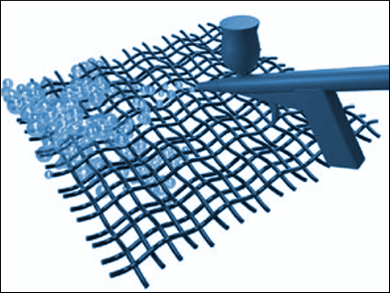Ecologically friendly aqueous supercapacitors are attractive power sources with fast charge/discharge capabilities. However, they cannot be widely used because of their insufficient energy density. This problem can be addressed by expanding the devices’ operating voltage.
Xihong Lu, Sun Yat-Sen University, Guangzhou, and Wuyi University, Guangdong, both China, and colleagues have investigated carbon-based aqueous symmetric supercapacitors and developed a surface charge control strategy to optimize their operating voltage. The capacitors were constructed from multiscale porous carbon made by spraying a hydrogel onto carbon cloth (pictured).
The correlation between the open-circuit potential of the electrode, the electrode potential when the cell operates at 0 V (P0V), and the operating potential window of the electrode was studied. Through precharging the electrode, the P0V value can be tuned, which results in a controllable shift of the operating potential window. The operating voltage of the supercapacitors was expanded by 0.4 V (from 1.4 to 1.8 V) further improving their energy density. According to the researchers, this smart surface charge strategy also holds promise for aqueous asymmetric supercapacitors.
- Boosting the Energy Density of Carbon-Based Aqueous Supercapacitors by Optimizing the Surface Charge,
Minghao Yu, Dun Lin, Haobin Feng, Yinxiang Zeng, Yexiang Tong, Xihong Lu,
Angew. Chem. Int. Ed. 2017.
DOI: 10.1002/anie.201701737




